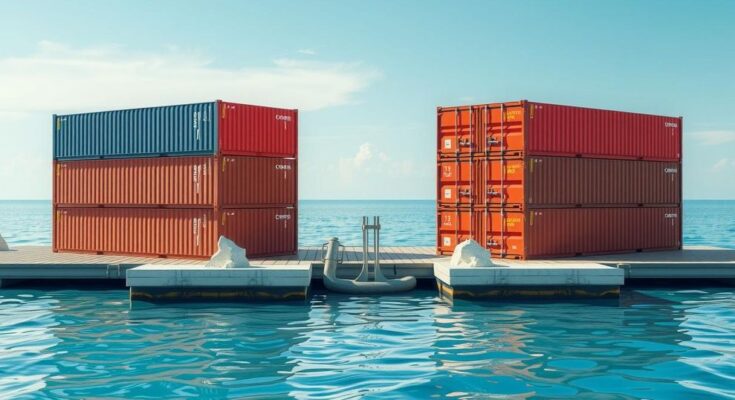Trade between Canada and the U.S. remains crucial, with Canada being the top export market for American goods. The U.S. enjoys a small trade deficit largely due to its demand for energy products. In the automotive sector, trade is balanced, but President Trump’s comments that the U.S. can replace Canadian exports overlook the complexity of integrated supply chains. Canada produces only 14 car models, despite consuming 325, highlighting the limits of internal production capacity.
Trump’s assertion that the U.S. subsidizes Canada by $200 billion annually lacks clarity and context. The U.S. trade deficit reflects its stronger economic performance rather than a deliberate subsidy to Canada. As Canada navigates prolonged negotiations under Trump’s tariff policies, understanding what is stake becomes increasingly essential. Notably, trade statistics indicate that the trade deficit described by Trump is not as severe as portrayed.
In 2024, trade flows between Canada and the U.S. reached C$800 billion, or about US$600 billion, with Canada being America’s largest export market. Around 34 U.S. states trade more goods with Canada than with any other country, emphasizing the deep economic ties. While Canada has a merchandise trade surplus, when services are considered, this surplus diminishes significantly.
Regarding the auto industry, the U.S. is a net exporter of vehicles and parts to Canada, demonstrating strong integrated trade. The reliance on each other for auto parts is profound, with parts crossing borders multiple times before assembly. Tariffs could trigger significant price hikes, impacting economic stability on both sides. Trump’s suggestions to boost domestic production overlook the heightened production needs and challenges of replacing Canadian imports.
The majority of the U.S. trade deficit with Canada is tied to energy, with nearly $170 billion exported from Canada last year. If Canadian energy imports were halted, the U.S. would actually enjoy a trade surplus with Canada. The importance of Canada for U.S. energy security underlines how intertwined their economies are. Tariffs on Canadian energy could lead to substantial increases in U.S. gasoline prices, directly affecting consumers.
Canada also plays a vital role as a supplier of critical minerals, with a significant share of U.S. needs met by Canadian exports. Trump’s claim about subsidy lacks basis and may misrepresent the economic reality, as trade deficits do not equate to subsidies. Both countries benefit from their trade relationship, significantly influencing domestic production, economic stability, and market sector dynamics.
In conclusion, while perceptions of a massive trade deficit with Canada persist, the data tells a different story. The narrative of American economic dependence on Canada often overlooks the mutual benefits bestowed by their trading relationship. As tariffs loom for renegotiation under the USMCA, Canada must remain vigilant in safeguarding against future trade challenges. Throughout, the equilibrium of trade should be maintained despite political rhetoric and the intensity of negotiations.
Canada is the largest export market for the U.S., with a significant share of trade stemming from energy products. The trade relationship is intricate, particularly in the automotive sector, where U.S. claims of trade deficits do not accurately reflect the reality. Despite perceptions of a subsidy to Canada, economic performance largely drives the trade figures. Tariffs could disrupt both economies, pressing the need for protective measures amid ongoing negotiations under the USMCA.
The examination of Canada-U.S. trade dynamics reveals that while Canada is a vital market for American exports, the narrative of an overwhelming trade deficit lacks substantiation. The key drivers of trade deficits relate primarily to energy, and perceptions formed by political discourse often overlook the true integrative nature of their economies. Going forward, Canada must staunchly navigate recurring trade discussions, prepared to shield itself from future tariff threats while reaffirming the significant benefits their partnership provides.
Original Source: economics.td.com



